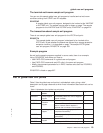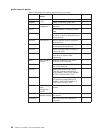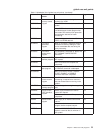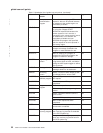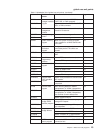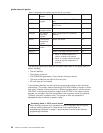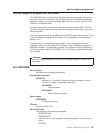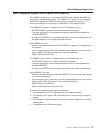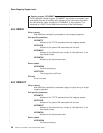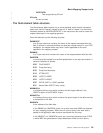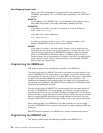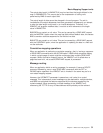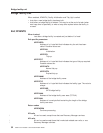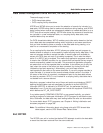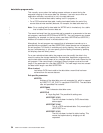
Basic Mapping Support exits XBMIN and XBMOUT
The XBMIN exit allows you to intercept a RECEIVE MAP request after BMS has
successfully processed the request. The XBMOUT exit allows you to intercept a
SEND MAP request after BMS has successfully processed the request; or, if
cumulative mapping is in progress, on completion of each page of output.
The XBMIN exit is called, if enabled, when all the following are true:
v A RECEIVE MAP command has been successfully processed.
v The map referenced in the command contains at least one field specified as
VALIDN=USEREXIT.
v At least one USEREXIT field has been returned in the inbound datastream and
has been mapped into the application data structure.
Using XBMIN, you can:
v Analyze each field defined as VALIDN=USEREXIT mapped to the application on
this request
v Use the mapset name, map name, and field length defined in the map, and the
actual length of field data returned in the inbound datastream
v Modify the data in each field.
The XBMOUT exit is called, if enabled, when all the following are true:
v A SEND MAP command has been successfully processed.
v The map referenced in the command contains at least one field specified as
VALIDN=USEREXIT.
v At least one USEREXIT field has been generated in the outbound datastream.
Using XBMOUT, you can:
v Analyze each field defined as VALIDN=USEREXIT which has been generated in
the outbound datastream
v Use the mapset name, map name, and field length defined in the map, and the
actual length of field data placed in the outbound datastream
v Modify the data in each field
v Modify the attributes sent with each field.
Both exits are passed four exit-specific parameters:
1. The address of the TCTTE associated with the mapping request
2. The address of the system EIB associated with the task issuing the mapping
request
3. The address of a halfword binary count of the number of elements in the
field
element table
4. The address of the field element table.
Basic Mapping Support exits
Chapter 1. Global user exit programs 27
|
|
|
|
|
|
|
|
|
|
|
|
|
|
|
|
|
|
|
|
|
|
|
|
|
|
|
|
|
|
|
|
|
|
|
|
|



